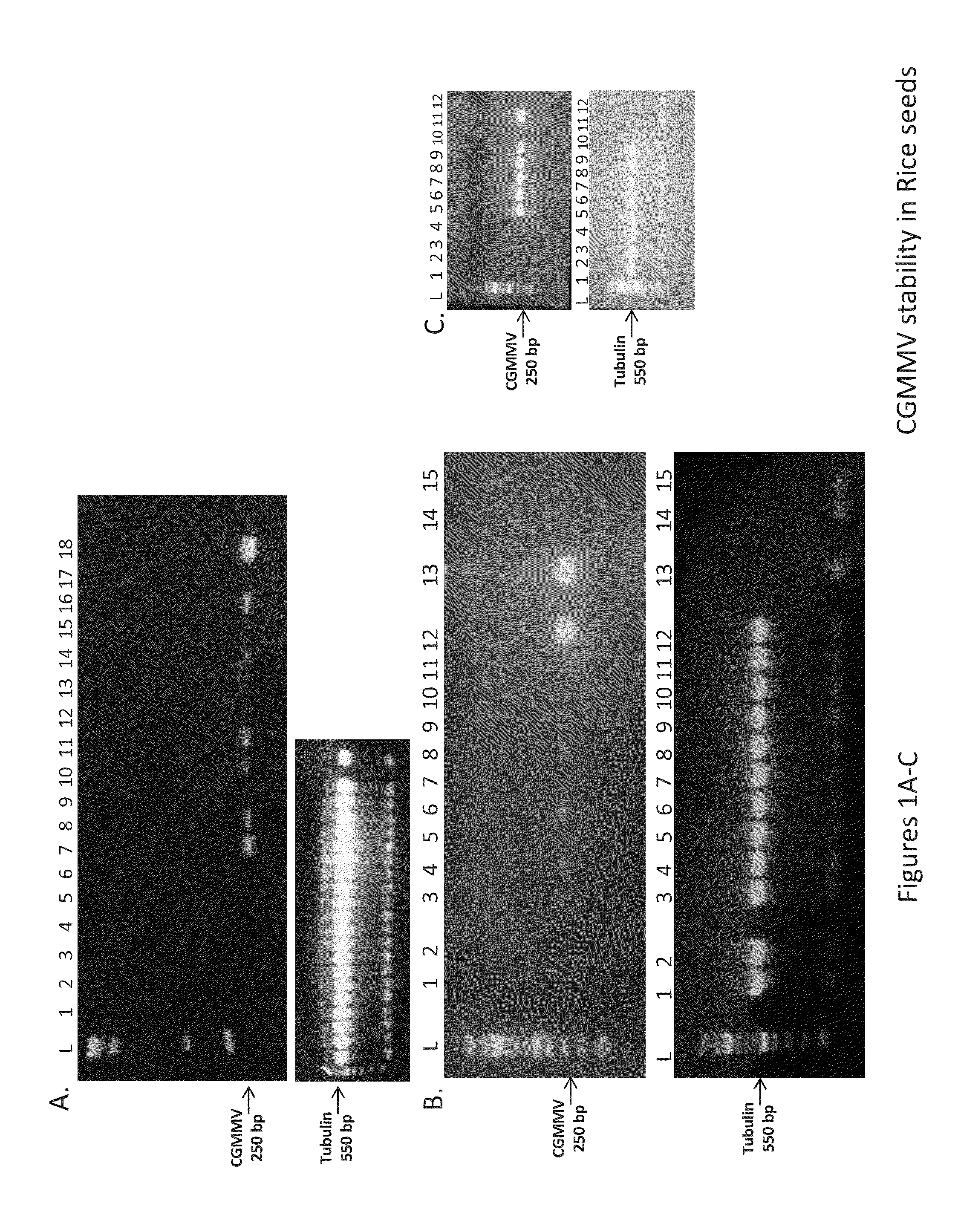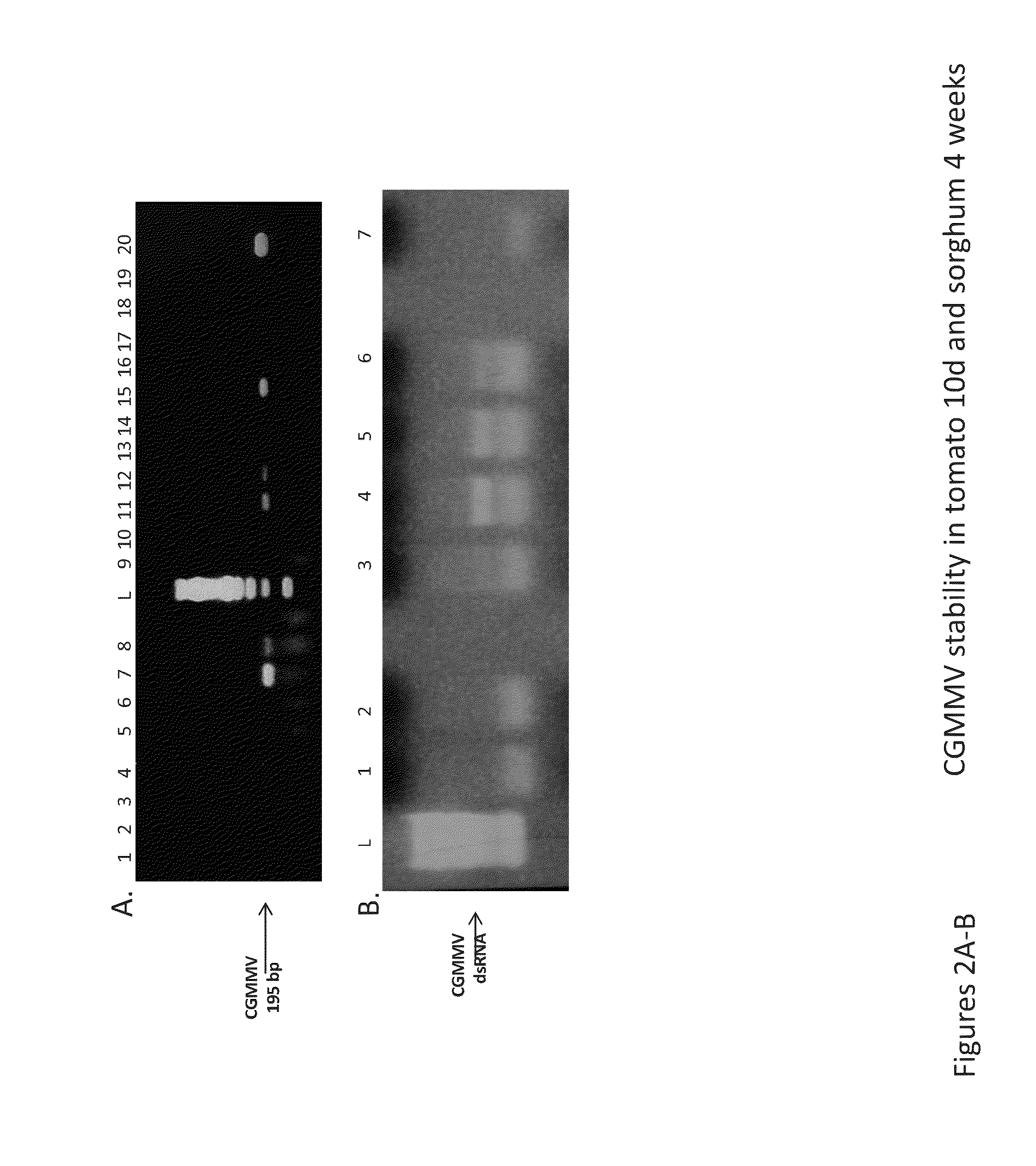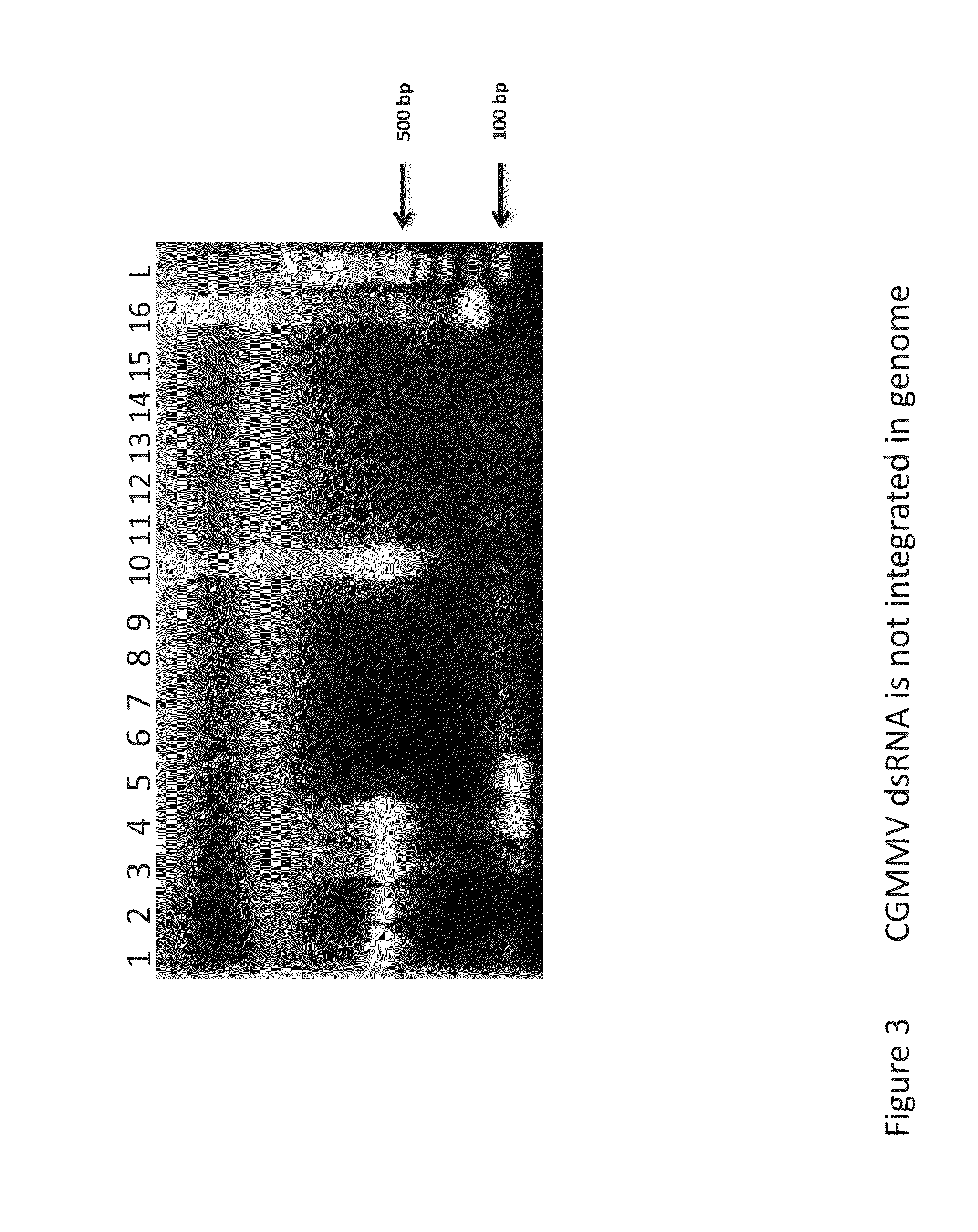Compositions and methods for silencing gene expression
a technology of gene expression and composition, applied in the field of compositions and methods for silencing gene expression, can solve the problems of difficult or impossible transformation of many important plant crop species, unfavorable agricultural development, and significant limited use of questions concerning the potential ecological impact of virus-resistant transgenic plants
- Summary
- Abstract
- Description
- Claims
- Application Information
AI Technical Summary
Benefits of technology
Problems solved by technology
Method used
Image
Examples
example 1
Protocols for dsRNA Production and Seed Treatment
[0331]Generating the dsRNA / siRNA Sequences
[0332]The dsRNA sequences were custom-created for each gene using in vitro transcription of PCR products. Part of the mRNA, including either the ORF, 3′ UTR or 5′ UTR for which dsRNA to be produced was PCR-amplified using gene-specific primers, which contain the sequence of the T7 promoter on either side. This product was used as a template for dsRNA production using commercial kits such as the MaxiScript dsRNA kit (Life Technologies) or T7 High Yield RNA Synthesis kit (NEB). Next, the sample is treated with DNase Turbo at 37° C. for 15-30 min followed by phenol treatment and nucleic acid precipitation. Next, one of two different reactions is carried out: (1) dsRNA is ready to use, (2) processing of the dsRNA with Dicer (Shortcut RNase III (NEB)) to create small interfering RNAs (siRNA).
[0333]Either dsRNA or a combination of dsRNA and siRNA were used for seed treatments as described below. All...
example 2
Stability of the dsRNA in Seedlings of Rice, Tomato and Sorghum
[0335]As an example for an exogenous gene that is not present / expressed in plants, the ORFs encoding the replicase and coat protein of CGMMV (Cucumber green mottle mosaic virus, accession number AF417242) were used as targets for dsRNA treatment of plant seeds using the protocol described in Example 1. Rice, tomato and sorghum seeds were washed for 4 hours at 20° C., tomato and sorghum were dried at 30° C. and rice at 20° C. for overnight. Seeds were immediately treated at 15° C. with 132.7 μg / ml dsRNA (final concentration) for 39 hours for rice, as shown in FIG. 1; 93.8 μg / ml dsRNA (final concentration) for 48 hours for tomato as shown in FIG. 2A and 75 μg / ml dsRNA (final concentration) for 40 hours for sorghum as shown in FIG. 2B. Briefly, the virus-derived ORFs were amplified by PCR with specifically designed forward and reverse primers that contain the T7 sequence (5′-TAATACGACTCACTATAGGG-3′, SEQ ID NO: 1) at their 5...
example 3
The DSRNA is not Integrated into the Genome of Rice
[0337]Rice seeds were treated with an exogenous dsRNA as in Example 2. Plants were germinated and grown for five weeks, DNA was extracted and PCR reactions were performed to demonstrate that the dsRNA did not integrate into the Rice's genome (FIG. 3). Two sets of primers that gave a positive reaction when checked on the RNA level were used, set 1 (see Table 1) of primers were the set of primers used to amplify the template (all the dsRNA sequence). Set 2 (see Table 1) are the primers that were used in the PCR on FIG. 1.A Rice endogenous housekeeping gene (tubulin) was used as a positive control for the PCR reaction (see Table 2).
TABLE 2Tubulin Primers Used for PCR Amplification.Primer NamePrimer Sequence / Primerand Direction(SEQ ID NO:)Lengthosa_TubA1_736FGGTGCTCTGAACGTGGATG / 1219osa_TubA1_1342RCATCATCGCCATCCTCATTCTC / 1322
PUM
| Property | Measurement | Unit |
|---|---|---|
| Temperature | aaaaa | aaaaa |
| Time | aaaaa | aaaaa |
| Time | aaaaa | aaaaa |
Abstract
Description
Claims
Application Information
 Login to View More
Login to View More - R&D
- Intellectual Property
- Life Sciences
- Materials
- Tech Scout
- Unparalleled Data Quality
- Higher Quality Content
- 60% Fewer Hallucinations
Browse by: Latest US Patents, China's latest patents, Technical Efficacy Thesaurus, Application Domain, Technology Topic, Popular Technical Reports.
© 2025 PatSnap. All rights reserved.Legal|Privacy policy|Modern Slavery Act Transparency Statement|Sitemap|About US| Contact US: help@patsnap.com



